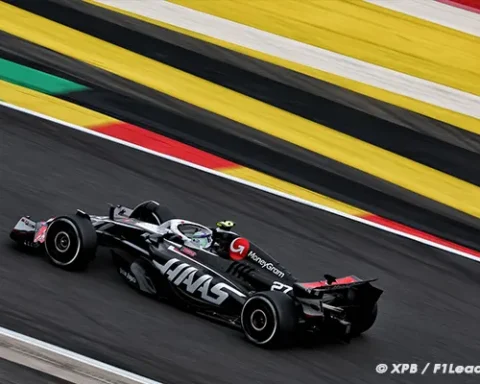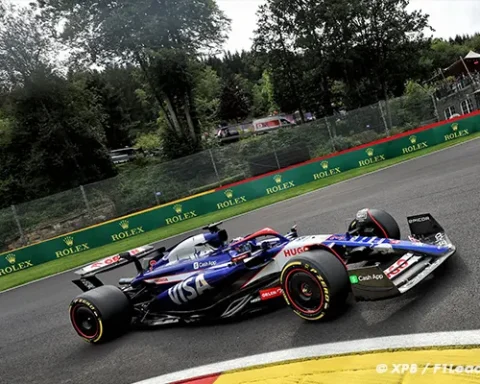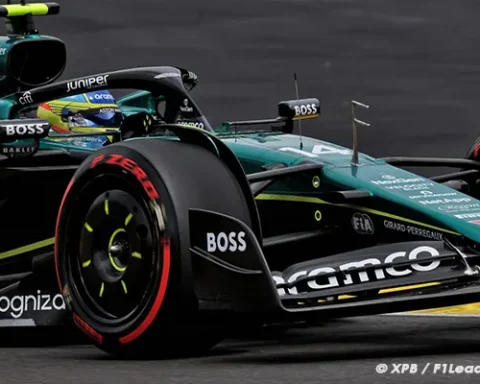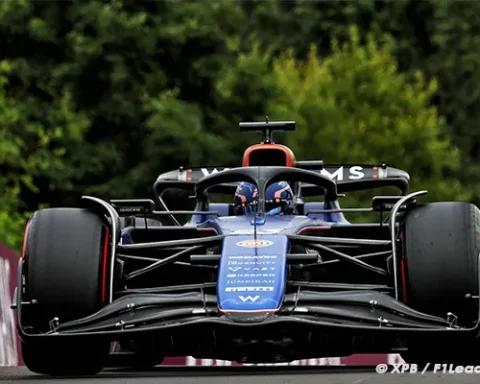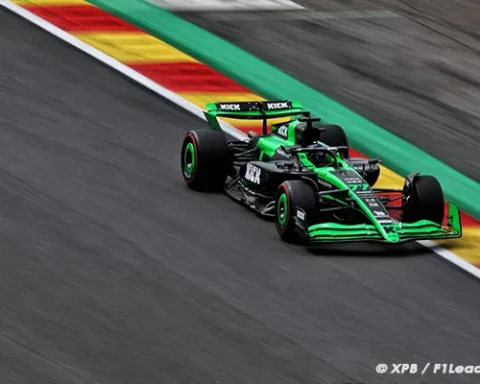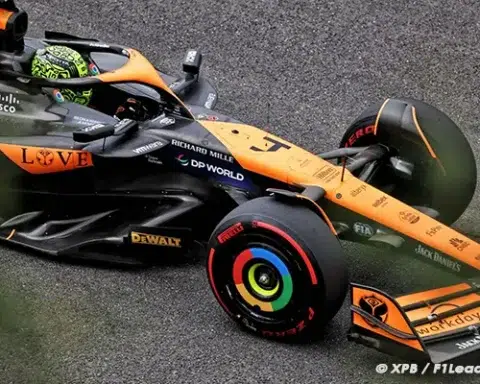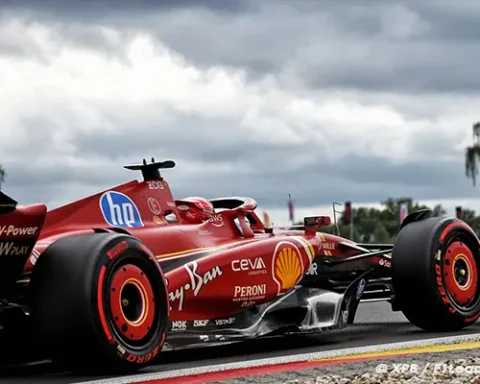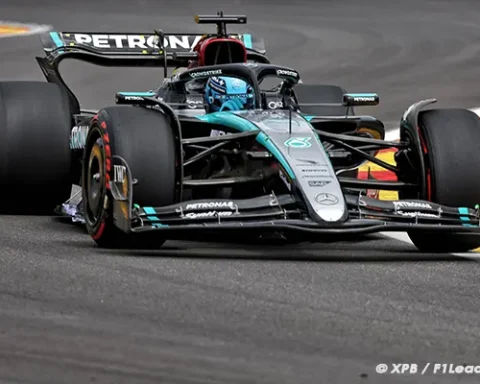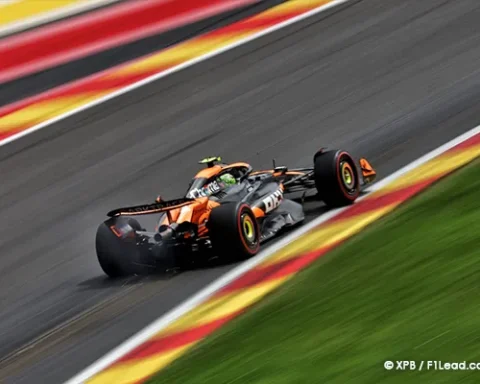In 2026, F1 will categorise circuits to address straight-line power issues, aiming to balance performance and efficiency with new technical regulations and advanced powertrain strategies.
The FIA is set to publish the technical regulations for 2026 by 30 June at the latest. By this time, the regulatory framework for the next generation of Formula 1 must be established.
Expectations include active aerodynamics, lighter cars, and narrower cars and tyres. Regarding power units, the regulations for 2026 have been in place for nearly two years, but interesting changes have recently emerged.
In the latest version of the powertrain regulations, the overtaking aid known as “Override Mode” and a special provision for circuits highly demanding on engines appear for the first time. This latter point also responds to sharp criticisms.
After initial simulator tests, Red Bull found that the speed profiles did not resemble those of a race. Drivers would need to downshift on Monza’s starting line to achieve optimal lap times, as this allows the battery to be charged particularly efficiently over a lap.
Red Bull thus sought to negotiate a higher fuel flow rate to focus more on the internal combustion engine. However, the FIA and other manufacturers preferred to stick to the original plan, which includes approximately 400 kilowatts for the combustion engine and 350 kilowatts for the electric motor.
Nevertheless, the problem was that on some circuits, there is simply not enough electrical energy to achieve the expected speed profiles on every lap. With reduced air resistance, less energy is needed for high straight-line speeds, but this is insufficient.
“We want to ensure that on tracks with very long straights, power is used a bit more evenly in the straights and that it is not all exhausted at the start,” explained FIA technical director Nikolas Tombazis.
Energy is released at the beginning of straights to optimise lap times. The observed issue is that the battery capacity – with nearly tripled electric power – remains at 4 megajoules, and with limited energy recovery, there is not enough energy for a permanent electric boost.
Thus, several measures have been included in version 6 of the engine regulations. This means there is no longer a need for such extreme countermeasures on the chassis side. A significant part of the revisions involves a special provision for high-speed circuits.
On tracks where over 3,500 metres are covered at full throttle, different rules apply compared to other tracks. The electrical power of the MGU-K cannot be reduced as quickly as usual. The electric power can decrease by a maximum of 50 kilowatts per second. On all other circuits, the electric boost can be reduced by up to 100 kilowatts per second.
With a maximum power of 350 kilowatts, it thus takes at least seven seconds at full throttle before the MGU-K can no longer send additional power to the crankshaft on high-speed circuits. This is intended to ensure that power is delivered more evenly on the straights and that peak speed is not reached in the middle of the straight.
The exact manner in which circuits will be affected by the special rule will be detailed later. Currently, Jeddah, Silverstone, Spa, Monza, Baku, and Las Vegas could be impacted. These circuits feature long laps and numerous extended full-throttle sections.
To this end, the maximum battery charging power has also been limited to 100 kilowatts as long as the combustion engine is providing power. This aims to prevent excessive fuel consumption for battery charging, ensuring the powertrain is used as a hybrid. The maximum charging power during braking remains at 350 kilowatts.
Regulators have also adjusted the output power to control speed profiles.
“We also want to ensure that we don’t have incredibly high speeds on certain tracks. We now have control over that,” said Tombazis.
From 290 to 340 km/h, the permitted electric power decreases linearly from 350 to 100 kilowatts. From 340 to 345 km/h, the maximum e-boost decreases linearly from 100 to 0 kilowatts; at higher speeds, the combustion engine must handle everything alone.
However, there is a significant exception to this rule: the so-called “override” mode. Not to be confused with the already available “Overtake” mode, this mode allows drivers to use the powertrain fully when they urgently need energy. This means they can deplete the battery, but cannot draw more than 120 kilowatts from the MGU-K.
Each team can configure the Overtake mode individually, and it can be used whenever the driver presses the corresponding button, as long as energy is available. This will remain the case in 2026. Additionally, there is an override mode as an aid to overtaking.
It is not yet known when, how frequently, and for how long this mode can be used. This must be regulated by the sporting regulations. Specifications similar to DRS or a certain number of intervals per race are conceivable. But the technical parameters are already in place: in override mode, more electric power can be used at high speeds. In this mode, the maximum power of the MGU-K decreases linearly from 350 kilowatts to 0 from 337.5 to 355 km/h.
But this overtaking aid is not sufficient: in the current version of the rules, the amount of energy allowed for recovery has been reduced. Instead of 9 megajoules, the MGU-K can only supply the battery with 8.5 megajoules per lap. On certain tracks, where this amount of energy can hardly be obtained through recovery, the limit is even reduced to 8 megajoules.

F1’s 2026 Strategy: Boosting Straight-Line Speed. F1’s 2026 Strategy: Boosting Straight-Line Speed. f1 2024 F1’s 2026 Strategy: Boosting Straight-Line Speed.
- You may also like>Official: Alpine F1, Ocon to End Partnership After 2024
- Following us on Facebook and Twitter

